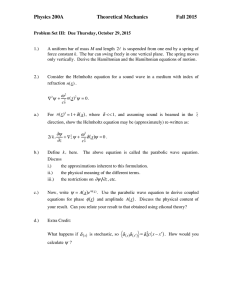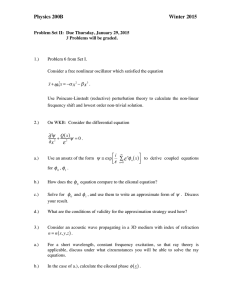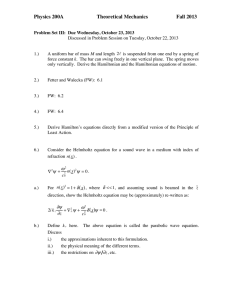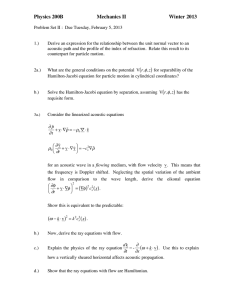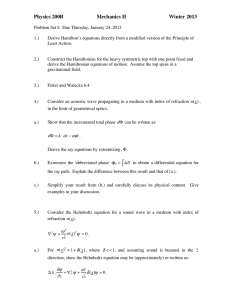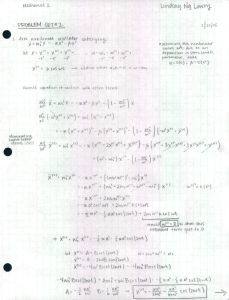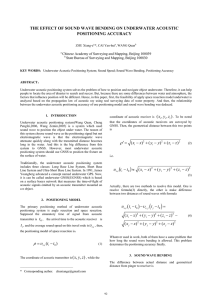Physics 200A Mechanics I Fall 2013
advertisement
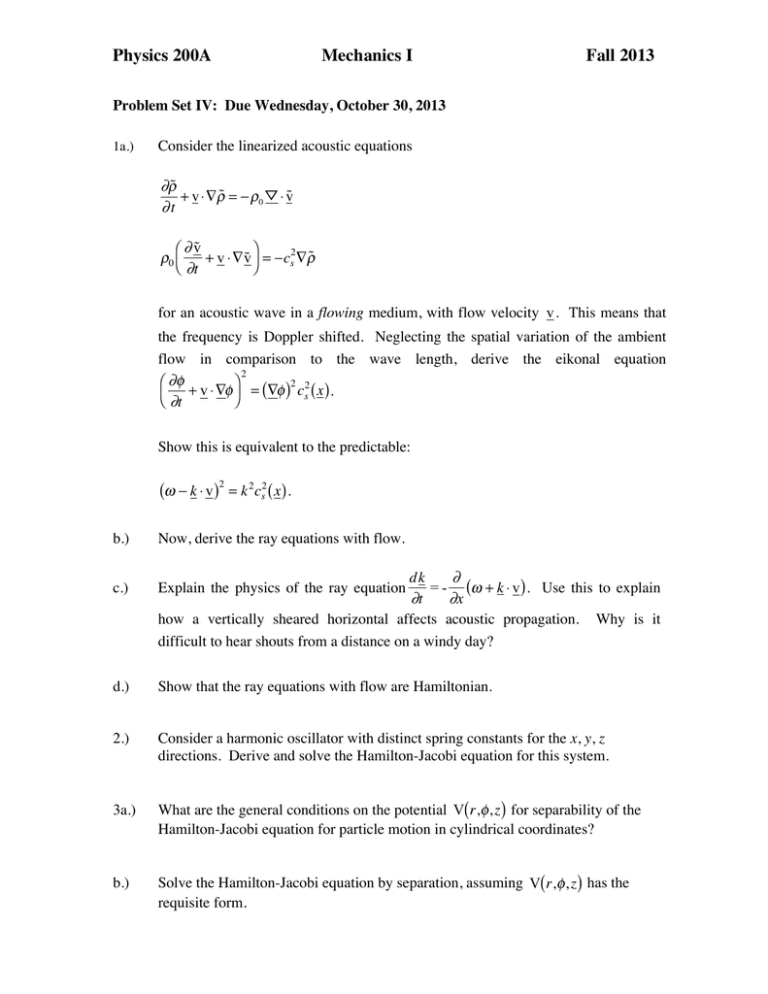
Physics 200A Mechanics I Fall 2013 Problem Set IV: Due Wednesday, October 30, 2013 1a.) Consider the linearized acoustic equations !"! + v#$"! = % "0 !t !0 # v! % " v˜ ' + v # $ v˜ = )cs2$!˜ & "t ( for an acoustic wave in a flowing medium, with flow velocity v . This means that the frequency is Doppler shifted. Neglecting the spatial variation of the ambient flow in comparison to the wave length, derive the eikonal equation 2 2 % !" ' + v # $" = ($" ) cs2 ( x ). & !t ( Show this is equivalent to the predictable: (! " k # v )2 = k 2 cs2 ( x ) . b.) Now, derive the ray equations with flow. c.) Explain the physics of the ray equation d.) Show that the ray equations with flow are Hamiltonian. 2.) Consider a harmonic oscillator with distinct spring constants for the x, y, z directions. Derive and solve the Hamilton-Jacobi equation for this system. dk ! = - (" + k # v ) . Use this to explain !t !x how a vertically sheared horizontal affects acoustic propagation. Why is it difficult to hear shouts from a distance on a windy day? 3a.) What are the general conditions on the potential V( r, ! , z ) for separability of the Hamilton-Jacobi equation for particle motion in cylindrical coordinates? b.) Solve the Hamilton-Jacobi equation by separation, assuming V( r, ! , z ) has the requisite form. Physics 200A Mechanics I Fall 2013 4.) Derive an expression for the relationship between the unit normal vector to an acoustic path and the profile of the index of refraction. Relate this result to its counterpart for particle motion, using the equation for a particle path. 5.) Consider an acoustic wave propagating in a 3D medium with index of refraction n = n ( x, y, z ) . a.) For a short wavelength, constant frequency excitation, so that ray theory is applicable, discuss under what circumstances you will be able to solve the ray equations. b.) In the case of a.), calculate the eikonal phase ! ( x ) . 6.) Determine the variation with altitude of the amplitude of a sound wave propagating in an isothermal atmosphere with gravity. 7.) On WKB: Consider the differential equation ! " + Q ( x )" = 0 . 2 !x2 # 2 a.) 'i $ * Use an ansatz of the form ! " exp ) % # n& n ( x ) , to derive coupled equations ( # n=0 + for ! 0 , ! 1 and ! 2 . b.) How does the ! 0 equation compare to the eikonal equation? c.) Solve for S 0 and S 1 , and use them to write an approximate form of ! . Discuss your result. d.) What are the conditions of validity for the approximation strategy used here?
